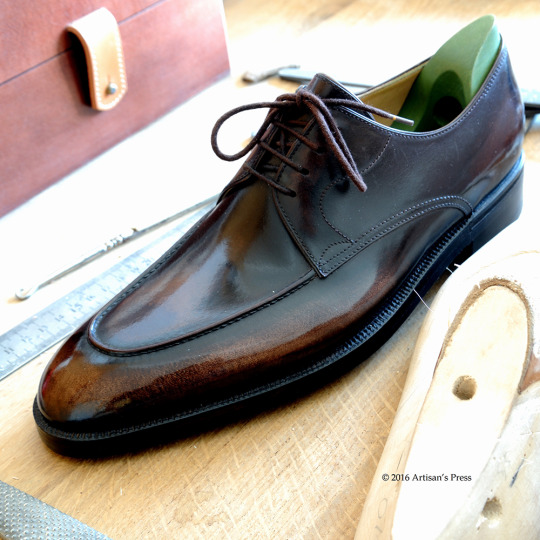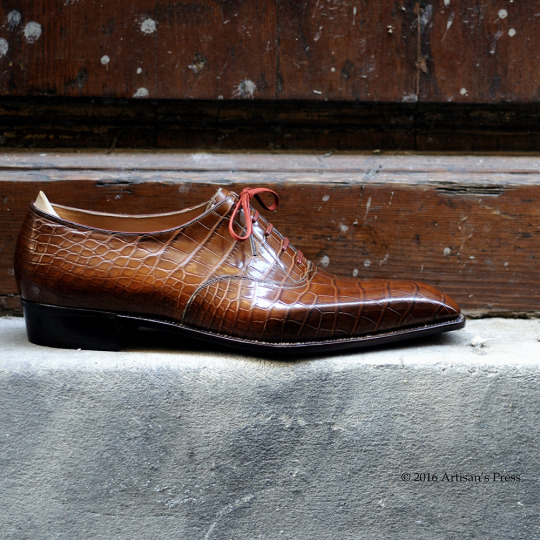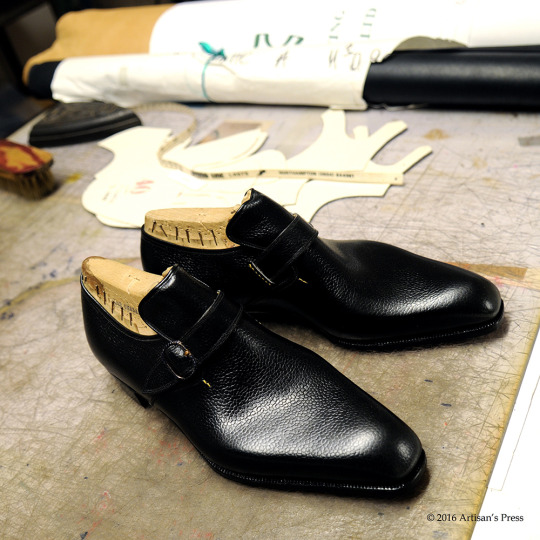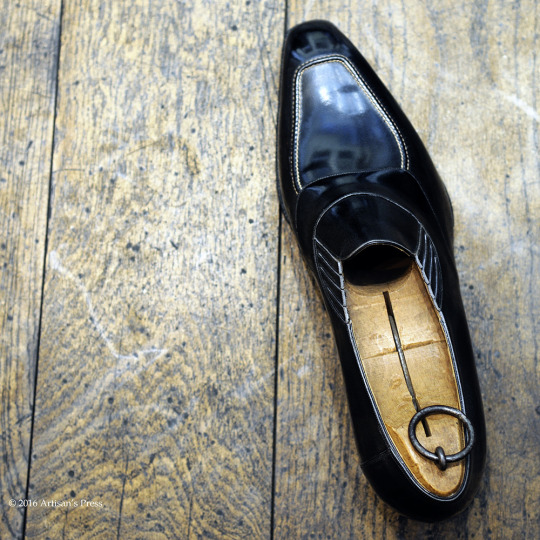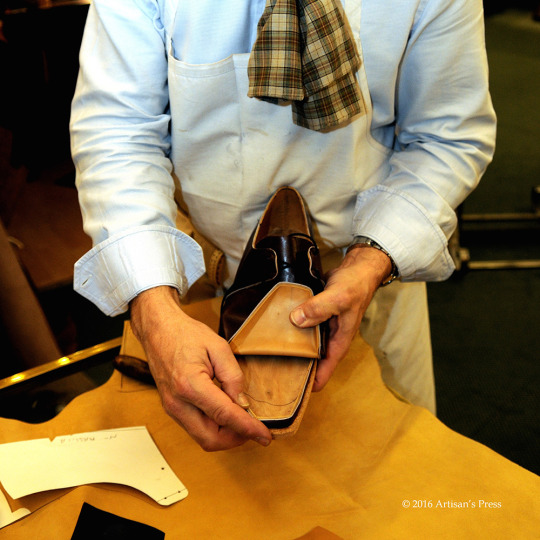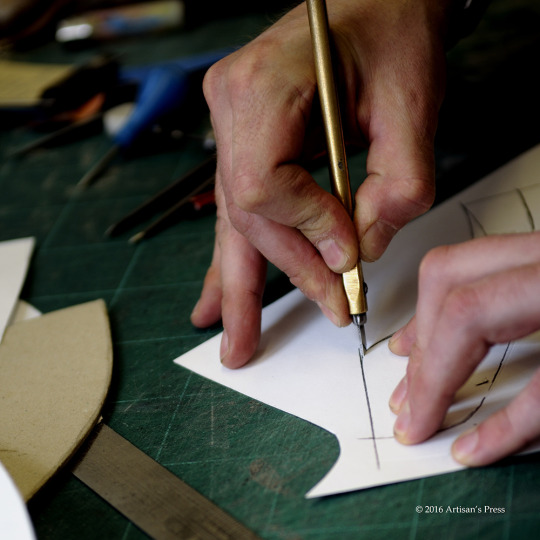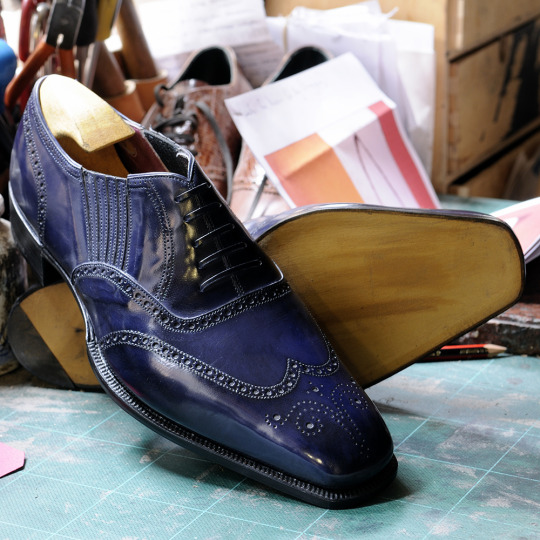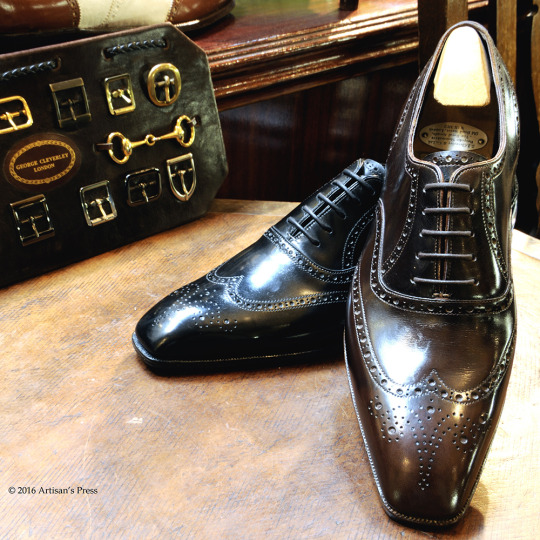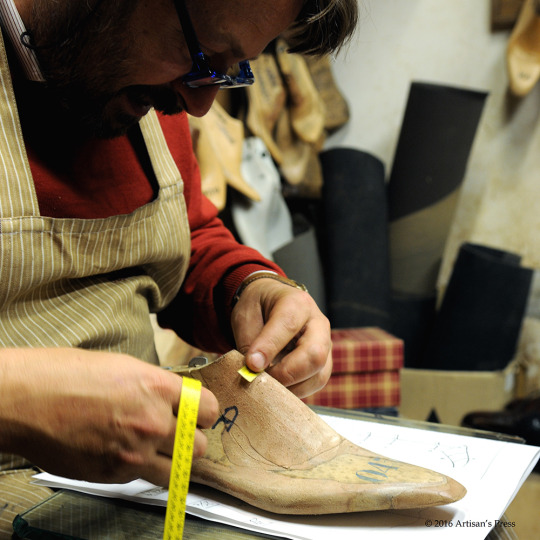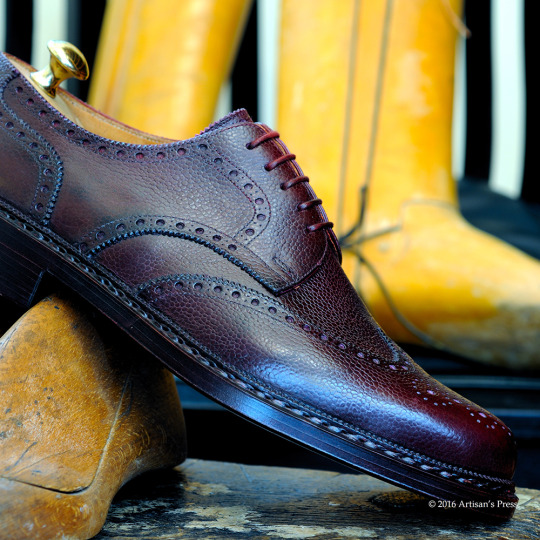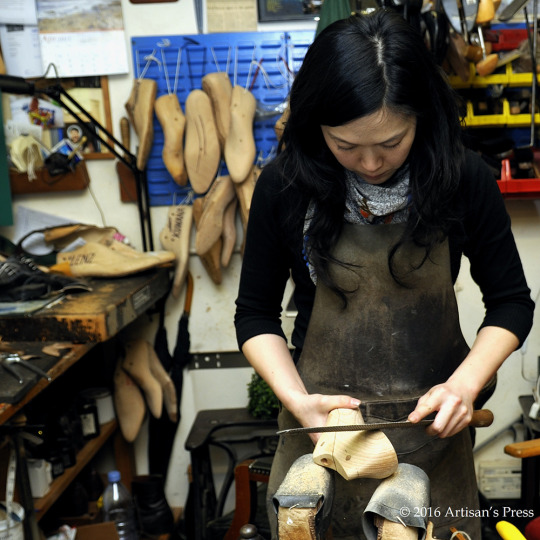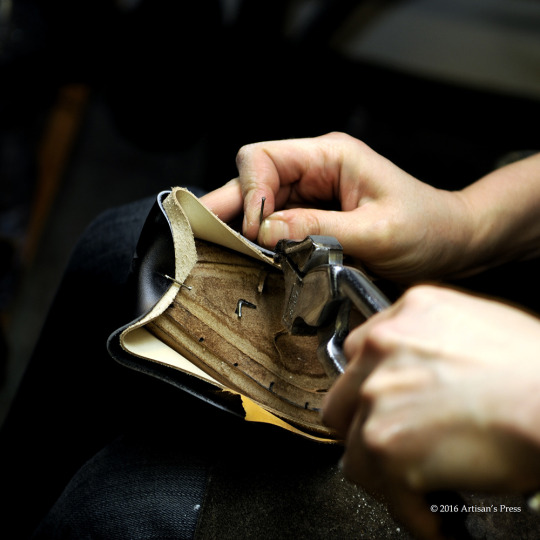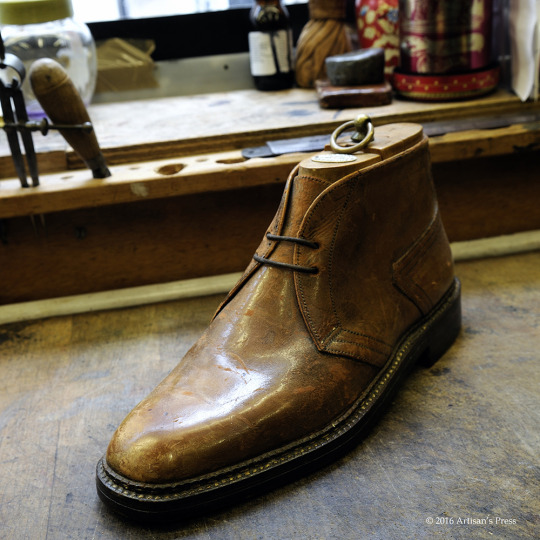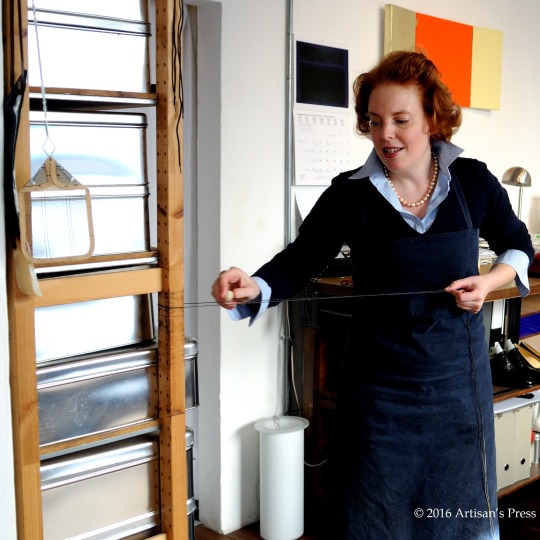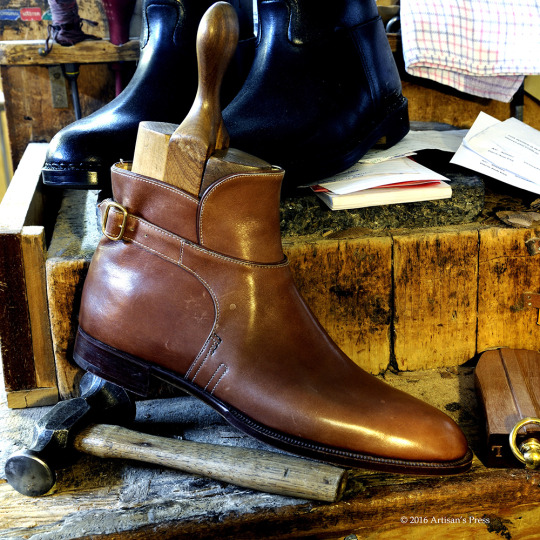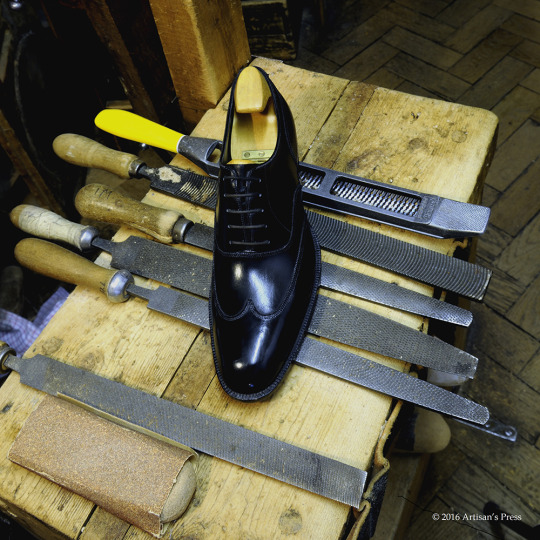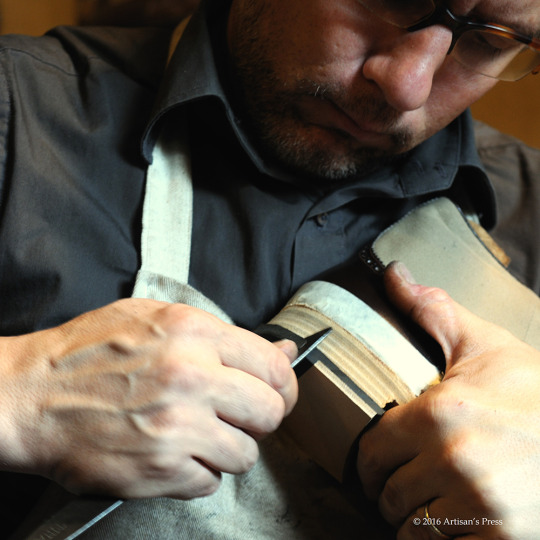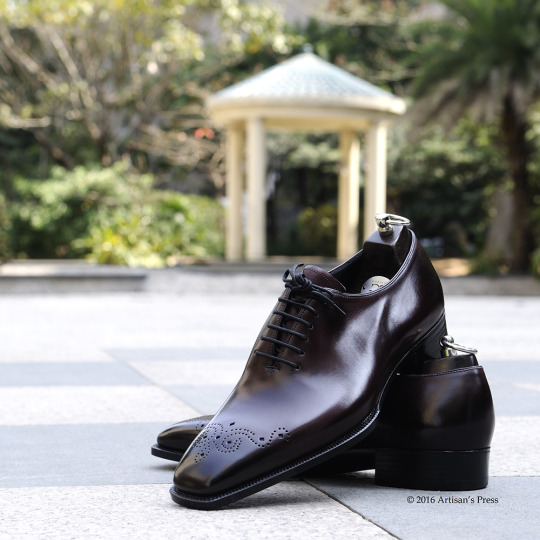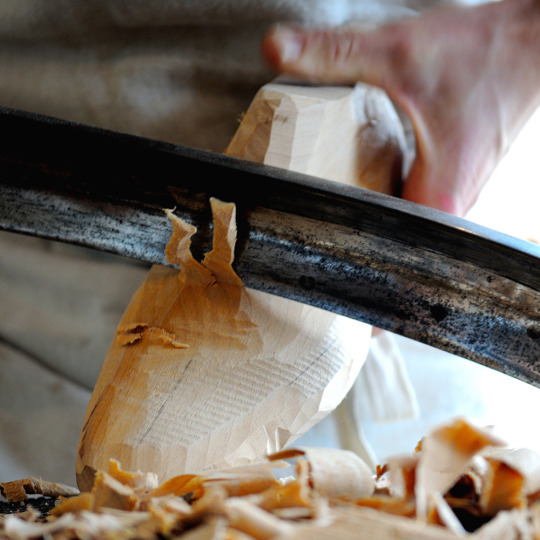
Even for guys who have been reading about bespoke tailoring for years, the world of bespoke footwear remains opaque. There’s not a lot of published information on the subject, and what’s available is often written in Japanese. Next month, however, there will be a new English text that promises to be interesting. Master Shoemakers is a new book by Gary Tok (known to some as gazman70k on StyleForum). For the last couple of years, he’s been traveling around the world, meeting and and talking with shoemakers – partly as a client looking for nice shoes, but also as a writer documenting a dying craft.
Master Shoemakers features eleven shoemakers and shoemaking firms from France, Germany, Italy and the UK. They included storied names such as GJ Cleverley, John Lobb Bootmaker, and Foster & Son, as well as niche artisans such as Anthony Delos, Hidetaka Fukaya, Benjamin Klemann, Roberto Ugolini, and Stefano Bemer (before his passing). As far as I know, this is the only book of its kind. I recently sat down with Gary to talk about his project.
What spurred you to write this book?
I came up with the idea in 2010, when I commissioned my first ever pair of bespoke shoes from Hidetaka Fukaya. At the time, I had already visited a few bespoke shoemakers to get a sense of their work. This made me realize that, aside from some things on the internet and a handful of Japanese magazines, there wasn’t a lot of published material on this subject. So I set on writing a book, which has been about five years in the making.
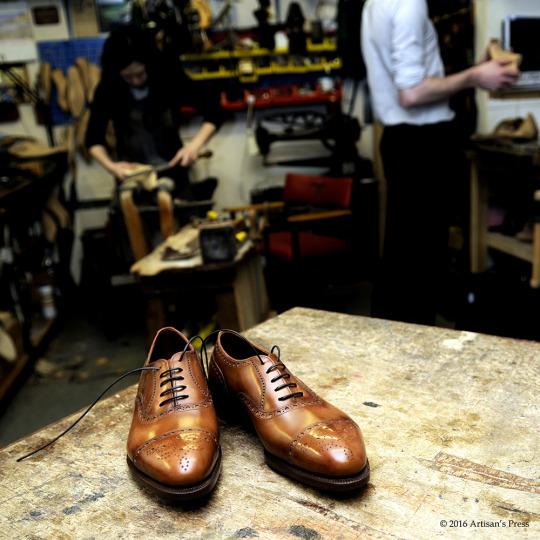
Unlike other books on luxury and craft, which often feel advertorial, I wanted to create something more honest. There are already a few books out there about classic men’s shoes, as well as how they’re made – László Vass’ Handmade Shoes for Men being one of the more famous titles. I didn’t want this to be overly technical, but instead focus on both the craft and the artisans themselves. For example, in the book, I talk about the history of English firms and their ups and downs as they try to pass the craft from one generation to another. The bespoke experience is also very personal, and I try to capture the intimacy of this experience in the book.
Bespoke footwear is such a unique niche. Few men get bespoke suits; fewer still get bespoke shoes. With all the options today for relatively affordable custom shoes – e.g. Vass, Saint Crispin’s, and Enzo Bonafe – what do you think makes bespoke shoes particularly special or worthwhile?
Bespoke shoes are indeed niche. Roberto Ugolini, one of the Florentine shoemakers I cover, once noted to me that bespoke footwear is typically the last step towards a fully bespoke wardrobe. Bespoke shirts are usually first, followed by a bespoke suit or sport coat. But most men stop there.
The truth is, unless you need orthopedic care, ready-to-wear shoes are usually sufficient. In fact, getting a pair of bespoke shoes to fit correctly is very challenging, and one shouldn’t expect the perfect pair from the get-go.
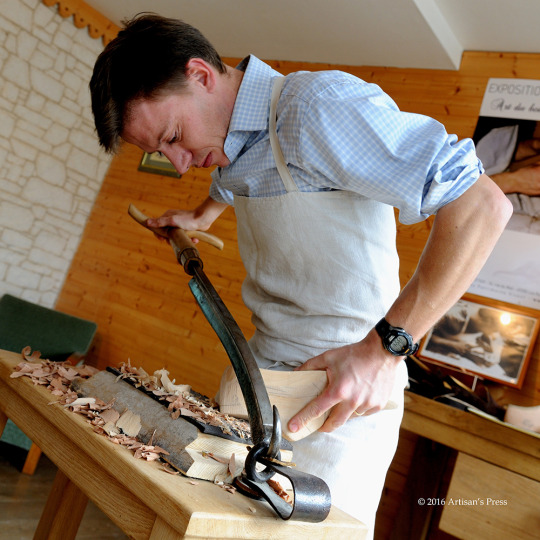
That said, in some ways, that just means that bespoke shoes are the ultimate representation of luxury in men’s style. The artisanal nature of the work means you don’t always get what you expect, and depending on where you live, you may have to travel to find good artisans. At the end, however, if the process works out, you get to realize your own personal vision for shoes. Bespoke lets you explore the nuances of shoe design, hopefully in a way that’s guided by an experienced shoemaker.
You cover a remarkably wide range of makers – anywhere from a relatively large house such as John Lobb to one-man operations such as Anthony Delos. What are some of the different ways production is organized?
The biggest difference between a large and small shoemaking firm is simply production scale. The English firms tend to be very well organized in this sense, but this is reflective of English shoemaking traditions. These larger firms are fulfilling their orders through large outworker networks. Typically, the firm will be responsible for the measuring, last making, clicking, and fitting. The other aspects are passed onto outworkers. The Swiss watch making industry evolved from a similar model back in the 17th and 18th centuries.
Smaller houses tend to keep more of the process in-house. This can result in greater attention to detail and execution, but for me, it comes down to just wanting a closer, more personal relationship with the people who are making my commission.
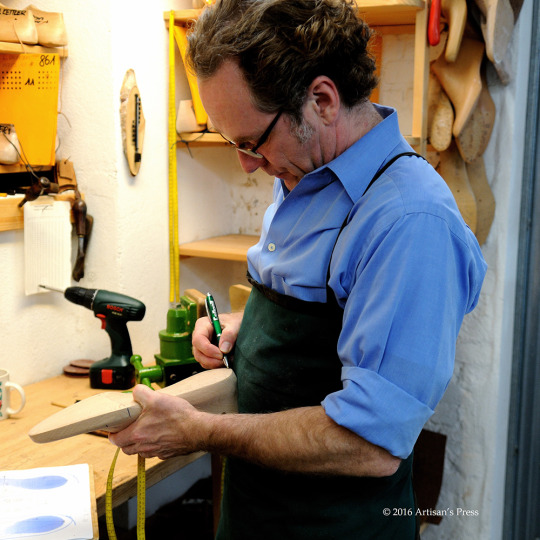
Whether one way is better than another really just comes down to the final product – the ability to achieve a good fit while also creating something that’s pleasing to the eye. Ultimately, given the artisanal nature of the work and the needs of individual customers, this will be very subjective.
Aside from production scale and business models, bespoke shoemakers also vary a lot in terms of how they make their shoes. Some use “fitted up” lasts; others create them from large blocks of wood. Some cut up their trial shoes at the fittings to see what’s going on inside; others don’t. Some firms don’t even require their last maker to be present at fittings. Have you found one approach to be better than others?
Again, there’s so much subjectivity here, it’s hard to say definitively that one technique is better than another. I’ve used a few different shoemakers and find they all do good work.
Personally, I think the most important factor is having an open and communicative relationship with your last maker. Ultimately, they carry the burden of making sure the fit is right and the shape is pleasing to the eye. Everything after that – the clicking, making, etc – follows from the last. Some last makers are stylistically fluid and willing to make whatever you want. Others are a bit more committed to a house style. Finding someone who can execute what you want, and being able to communicate those details with him or her, is really the most important part.
You cover nearly a dozen shoemakers in this book. Which are some of the ones you’re particularly excited about? And what about them do you think makes them special?
They all offer something unique. I included firms that I think are iconic in this field, such as GJ Cleverley and John Lobb. Others are smaller houses that excel at what they do.
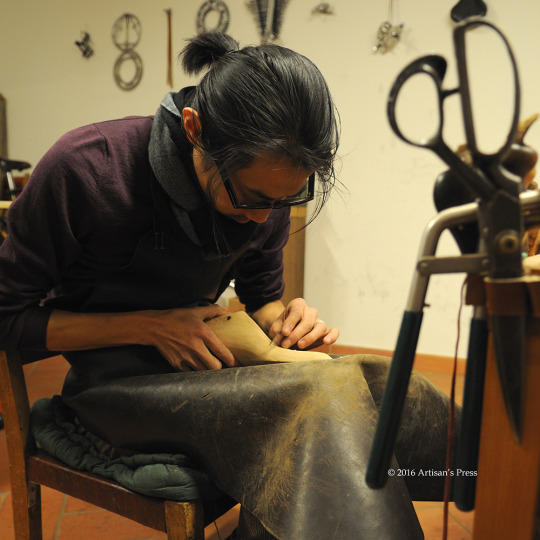
Part of this book came out of my own journey to commission shoes from master shoemakers around the world. Choosing ones I would work with, however, was somewhat of a balance between getting people who I thought would execute something particular for my needs – things that would suit my feet and sense of style – and were located in places that I could easily visit. For example, I love the work of Benjamin Klemann, but unfortunately wasn’t able to be in Hamburg for fittings.
That said, I commissioned shoes from four of the eleven shoemakers – Hidetaka Fukaya, Roberto Ugolini, Anthony Delos, and Gaziano & Girling. More recently, I’ve started working with Nicholas Templeman, an independent shoemaker in London, although that started after I finished writing this book.
My first ever pair of bespoke shoes came from Hidetaka Fukaya. It happened by chance, really. I was walking down a small alleyway when I was vacationing in Florence, Italy and serendipitously came across his shop. I was immediately captivated by the unique designs in his store window; they were more like art pieces than shoes. So I decided to go in and commission something.
It turns out, Hidetaka was an excellent guide to this new world. He pushed back on my ideas for certain designs because he didn’t think they’d suit my feet. I was put off at first, but soon learned that it can be good to rely on the craftsperson’s advice.
Hidetaka’s designs draw a lot from mid-century English designs, especially those from Anthony Cleverly. He actually has a small collection of Anthony Cleverly shoes – originals that were made during the ‘50s and ’60s. His own work has somewhat of an English flavor, especially in how he cuts the toes. That’s true whether they’re rounded or chiseled, although he tends to refine them a bit so they have a slender silhouette.

I was also really impressed with Roberto Ugolini’s work. He strikes a nice balance between a well-portioned shoe and fit. Interestingly, he conducts his fittings with a trial shoe, which isn’t something many Italian shoemakers do. Many essentially produce their shoes the way a bespoke tailor would construct a suit – building it up from scratch and adjusting here and there – rather than starting with a toile (or here a trial shoe) and creating the finished design based off those results.
Both Anthony Delos and Dimitri Gomez make wonderful shoes as well. The French have this wonderful way of creating traditional shoes that are both refined and slightly flamboyant. Anthony has a keen eye for detail and his finishing is superb. Not dissimilar to Hidetaka, he has a very clear sense of what he thinks his shoes should be. On the other hand, Dimitri has a keen sense of material, constantly stocking up on a wide range of leathers. By working with Crockett & Jones, he seems to have very good access to harder-to-find hides.
Finally, I’ve worked with Tony Gaziano at Gaziano & Girling. I like him for his contemporary takes on traditional English styles. He also has great access to interesting leathers, and was maybe a little more open to experimentation in terms of design.
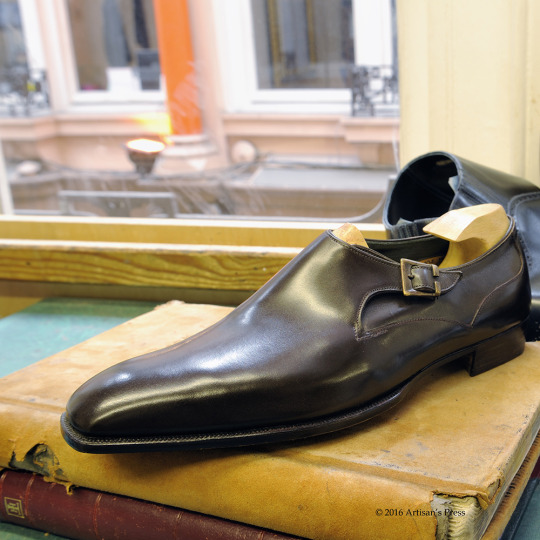
Your book focuses on European makers (or Japanese makers now living in Europe). Any reason why there aren’t any companies from Japan in here?
This is actually just the first volume in a multi-volume series. I wanted the first volume to focus on European makers since that’s where most of our dress styles come from. I’m currently working on a follow-up book, which will concentrate on Japanese makers who studied under European teachers.
Japanese shoemakers are fastidious when it comes to sticking to the spirit and techniques they learned as students. This has actually been one of the ways the craft has survived. Many European firms are having a difficult time finding local apprentices who are willing to invest the time and effort to learn traditional techniques. So many of them, particularly in Italy, are taking Korean and Japanese students.
Commissioning a pair of bespoke shoes seems very different from commissioning a bespoke suit or shirt. For people looking to commission bespoke shoes, what advice do you have for the process?
Personally, my process for selecting the bespoke shoemaker is similar to that of selecting a tailor. Unless you have unlimited resources and time to tinker with various makers, my advice is to have a good understanding of your own proportions and desires for fit.

Men, in general, tend to wear their shoes a little larger than they should. As a result, our pre-bespoke perception of comfort is distorted. Much like the supportive feeling of a higher armhole in a suit, those new to bespoke will find greater support in the heel, vamp and instep. In fact, if one has worn larger shoes, a new pair of bespoke shoes can actually result in blisters and discomfort as the leather flexes much closer to the foot.
Every shoemaker, whether RTW or bespoke, has a unique house style. Most of the time, this style is dictated by their preference for a particular toe shape and/or proportion. Some makers are more committed to their sense of proportion than others. For example, Anthony Delos steadfastly refused to create chiseled toe lasts when he worked for himself. Stefano Bemer, on the other hand, was known for his softer, rounder lines and flatter toe cap.
Ultimately, the decision to use one maker over another is driven by the intimate knowledge of one’s proportions and knowing whether a shoemaker can accommodate those proportions. Perhaps this is where some of the smaller operations are more open to the fitting process than the larger houses, which typically adhere to a more rigid pattern.
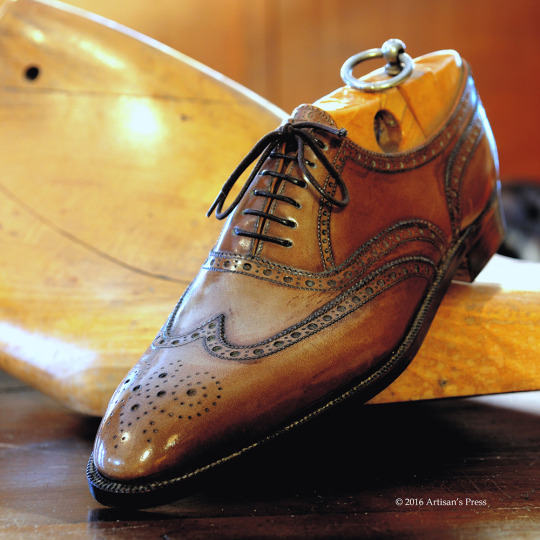
What’s next for you? Along with this book, you’ve started a publishing house. Are you working on any new projects?
If this book is well received, I look forward to having a second volume that focuses on the lesser-known shoemakers – not just the next generation of European shoemakers, but also Japanese artisans. I’m also thinking about writing a book about bespoke suits using a more empirical approach to various tailors’ house styles.
The world of bespoke shoes can be so open ended in terms of design. If you were limited to just five pairs, what designs would you chose for yourself?
Well, I can simply go through my collection as I have taken a practical approach in commissioning my bespoke shoes:
- A black box grained calf leather oxford
- A brown calf oxford with a cap toe
- A brown calf derby
- A chocolate brown double monk
- A tasseled loafer
I find this gives my wardrobe the flexibility and versatility it needs.
Thanks for your time, Gary.
Readers interested in the book can pick it up soon at select retailers, including The Armoury, Bryceland’s, Brio, Skoaktiebolaget, Double Monk, LeatherSoul, and Vanda Fine Clothing. Gary also has an Instagram page for his project, where you can find pre-order information later this week.


